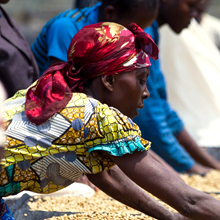Improvements in Shared Prosperity have Stalled
Average income growth alone is not a sufficient marker of development, so it is important to track shared prosperity, a measure of the inclusiveness of growth. The Global Prosperity Gap, a new indicator of shared prosperity used by the World Bank, tracks how far the world is, on average, from a threshold of $25 per person per day with a specific emphasis on the incomes of the poorest.
Progress in reducing the Prosperity Gap stalled since the pandemic, highlighting a slowdown in inclusive income growth over this period.
High inequality can reflect a lack of opportunities for socioeconomic mobility, which can further hinder prospects for inclusive growth and poverty reduction over time.
Around one-fifth of the world’s population lives in countries with high inequality. Today, high levels of income or consumption inequality are concentrated among countries in Sub-Saharan Africa and in Latin America and the Caribbean.
Faster and more inclusive growth is needed to accelerate progress in achieving shared prosperity. At current growth rates, a typical upper-middle-income country will need 100 years to close the Prosperity Gap. The number of years needed can be reduced if income growth is substantially faster or more inclusive. Countries can achieve the same level of prosperity with less growth and a decrease in the level of inequality.
Find out more: Poverty, Prosperity, and Planet Report 2024: Pathways Out of the Polycrisis
Last Updated: Oct 15, 2024

